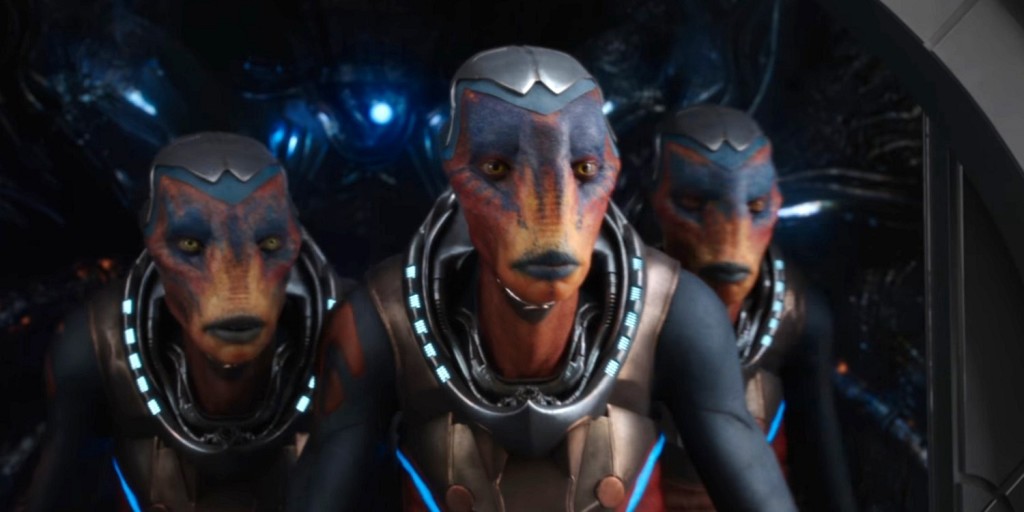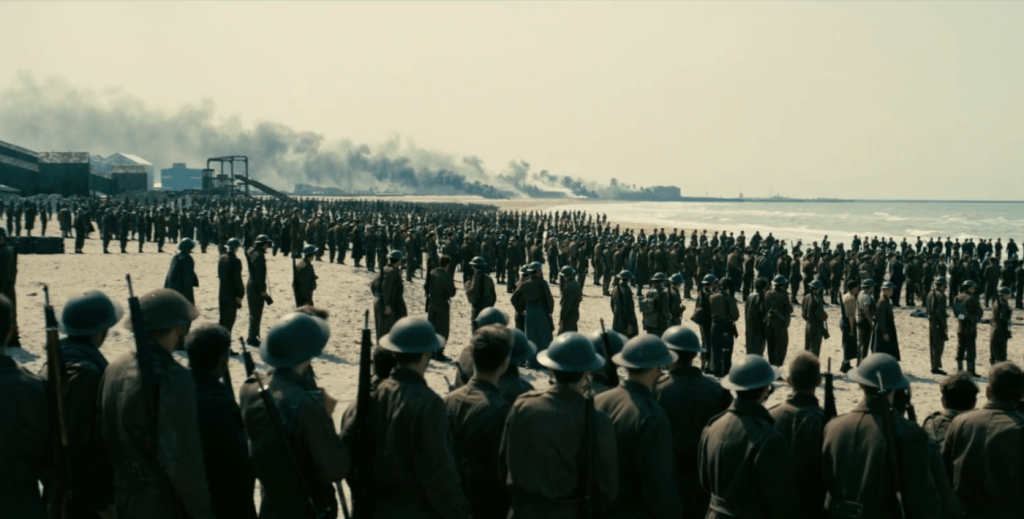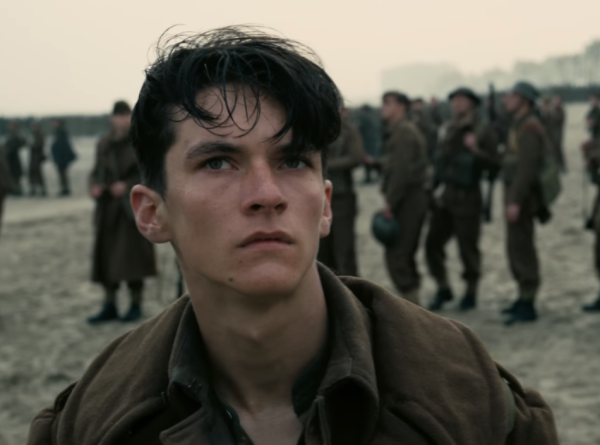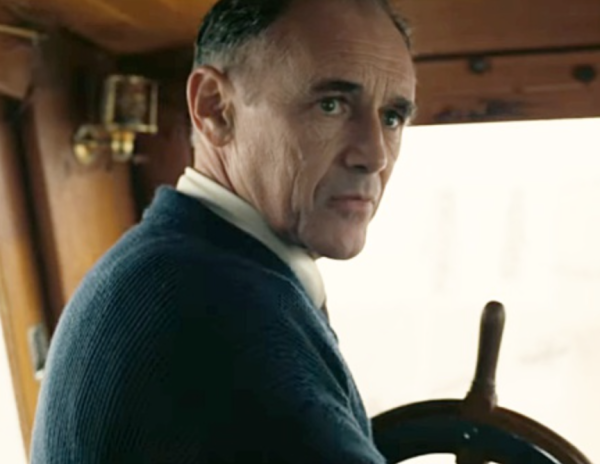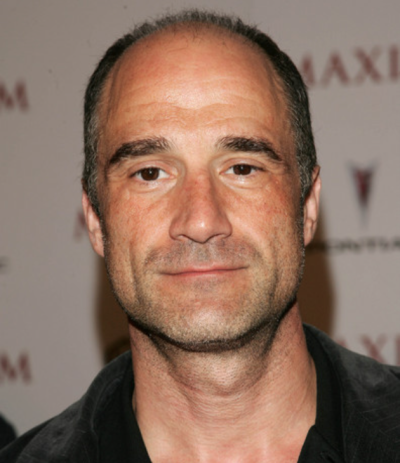Genre: Sci-Fi
Premise: (from IMDB) A dark force threatens Alpha, a vast metropolis and home to species from a thousand planets. Special operatives Valerian and Laureline must race to identify the marauding menace and safeguard not just Alpha, but the future of the universe.
About: This is Luc Besson’s dream project. Back when he made the quirky yet beloved Fifth Element, this is the movie he really wanted to make, but didn’t have the budget or the technology to do so. Much like when George Lucas felt that technology had caught up to his imagination with The Phantom Menace, Besson decided that the same had finally happened with Valerian. Unfortunately, without the brand power that Star Wars has, the film couldn’t make an impact at the U.S. box office this weekend, taking in just 17 million dollars. Not good for a film that cost 200 million dollars, even if Besson claims he has discovered the magic formula for making giant movies that have zero financial risk. All is not lost for Valerian, as it is yet to open internationally, where outlandish sci-fi does a lot better. It’s probably not inaccurate to say that everything depends on China. China is known for liking wacky weird fantastical movies, which is exactly what Valerian is. If it can somehow pull in 200 million there, Valerian may turn into the franchise Besson so desperately wants it to be.
Writer: Luc Besson (based on the comics by Pierre Crhistin and Jean-Claude Mezieres)
Details: 2 hours and 17 minutes
I often wonder why we feel so good when a movie does so bad?
Whether we like to admit it or not, for most of us, there is a rush of satisfaction when a film fails. We’re infused with a hit of ‘bomb adrenaline’ and we can’t wait to discuss the failure with our film buddies.
I hate that feeling. I always have. Why can’t we celebrate movies whether they succeed or fail, particularly since we know how difficult it is to make them. No matter whether you’re making Short Term 12 or The Bourne Identity, you’re told a thousand times “No no no no no no. It’ll never work because a, b, c, d, e, and f. Quit now.” And yet someone believes in that project so much that they persevere, say ‘fuck you’ to the haters, keep fighting, somehow get a director involved, somehow get actors, somehow convince a studio to pony up the budget, somehow pull another 500 craftsmen out of the woodwork over the course of six months to make that thing that was once just a series of images in their head.
Why can’t we celebrate that?
I think I know.
When Hollywood gets it right, it means they don’t need us. The aspiring writers, aspiring directors, aspiring editors, bloggers, reviewers. If every movie did well, it would mean that they don’t need our help. And that’s the most threatening thing you can say to someone who wants to make films: “WE DON’T NEED YOU.”
Every time a movie bombs, it’s validation that they do need us. It’s our chance to say, “Seeeee! Even with your billion dollar marketing teams and partnerships with toy conglomerates and number crunching boardrooms, you still get it wrong.” Which is why you need us. We can tell you how to get it right.
Which brings us to Valerian and all the hatred the movie is receiving for bombing spectacularly this weekend.
Guys, Valerian is not deserving of our ill-will. Not in the way a Pirates 8 or a Snow-white and the Huntsman 4 is. This film was not calculated in a boardroom by marketing people. This is a passion project. This is a film that the filmmaker has wanted to make for fifty years. FIFTY YEARS! This is a movie that a man was willing to bet his studio on.
So Valerian doesn’t deserve scorn for its failed box office. It is, just as much as Dallas Buyer’s Club, Moonlight, or Spotlight, a project that someone cared about with all their heart.
So then why the hell is it so bad?
And not just bad, but bad in the way that you feel nothing when it’s over. Ironically, the main reason it’s bad is because it’s trying to be the very thing it claims it isn’t – a studio film. A studio film with one thing missing – studio oversight.
Isn’t it bizarre? The thing we claim harms so many movies is actually the thing that could’ve saved this one? More on that in a sec.
Valerian opens on the planetary equivalent of Hawaii, a gorgeous beach with humanoid aliens who all look like intergalactic runway models. Now these aliens have a pet, a sort of iguana like creature that – stay with me here – shits pearls. But not just any pearls, pearls that contain limitless energy.
While the beach aliens are enjoying a typical day on the most beautiful planet in the universe, a bunch of ships or meteors or something start crashing into the planet, destroying it. Our poor runway model race is wiped out. Or so we think.
Cut to years later across the universe where we meet Agent Valerian and Agent Laureline, young strapping intergalactic agents of, um, something. Valerian is a ladies man who finally wants to settle down with Laureline, but she’s having no part of it, having seen him bang too many chicks during their adventures. Or so we’re told.
The two are called in to retrieve a stolen item from an alien mob kingpin, which is where they come across one of those iguanas – you know, the ones that shit pearls. Valerian does some research and discovers that the iguana comes from a planet whose history is protected by a top secret classification protocol. There’s no way to find out what happened there.
Naturally, he wants to know more, but before he can find out, Laureline gets kidnapped inside the piece-mailed-together space station where they’re headquartered, a giant sprawling hub of alien activity known as “Alpha.” Valerian will have to go save his partner, and along the way learns why this space iguana and that planet are so damn important.
God was this movie mis-cast. Like oh-my-god-what-was-Luc-Besson-thinking mis-cast. You’re talking about two teenagers (or near-teenagers) being the best space agents in the universe? Who’s going to buy that? That may be the biggest reason for why this movie bombed. You saw those two in the trailers and thought, “I wouldn’t trust those two to do my laundry, much less save the universe.”
Why is that relevant on a screenwriting website? Because every script is dependent on its characters. If the audience doesn’t believe in the characters, it doesn’t matter what the plot is. The audience has already decided that they’re not crossing your suspension of disbelief bridge.
And this is where some basic – I’m talking Screenwriting 101 – studio notes could’ve helped Besson. Take Valerian the character. Valerian is a ladies man. This is what we’re told, anyway. However, when we look at Valerian, we see a skinny dorky dude with the presence of an alternate on the Debate Team.
THIS guy is a “ladies man???”
Okay, now. There are different types of men who attract women. Not all of them have to be buff and look like Bradley Cooper. But, if you’re going to present us with someone who doesn’t look the part, you must SHOW US (“show don’t tell”) how he charms and beds women. If we see him skillfully seduce anyone, we’ll be converted.
But Besson never shows this. He assumes we’ll take him at his word. This is such a basic screenwriting mistake it practically guarantees that everything we’re about to see from here on out will be similarly hackneyed. If you can’t even get basic character introductions right, why the hell should we trust you to take us through a sprawling complex space opera?
Indeed, that’s exactly what happens. The plot here is incomprehensible. There is no main goal to keep things focused (i.e. Get R2-D2 to Alderran), but rather a series of shifting goals that are either too small or too vague to care about. Oftentimes a goal would be set and within five minutes, I’d forget what it was we were after.
And then when the goals were clear – such as when Laureline got lost in the Alpha station and Valerian had to find her – they didn’t contribute to the plot in any meaningful way. In fact, they often felt like stalling, a device Besson would use to spend more time exploring his Alpha station.
And this doesn’t even get into the weird miscalculated plot points Besson included such as the pearl-power shitting space iguana. The idea is so juvenile as to make you think it came from the mind of a 5 year old. And this plot point is what’s powering the entire movie!!! That would’ve been studio note #1 right there. “Get rid of the space iguana that shits power pearls or we’re not making this film.”
That’s the thing with studios. Yes, they strip away riskier choices that may have resulted in a more compelling film. But they also protect us from cataclysmic mistakes like this one.
Valerian is a weird movie based on a weird screenplay. This might have been a classic case of getting lost in the forest of your idea, something that can happen if you you have too much time to think about something. You know what helps in those cases? Feedback. Getting someone who understands story to look at your script and help you identify its problems. Besson never did that and this was the result.
Wrapping this review up, let me ask you something – cause I know there’s a lot of Avatar hate out there (I’m not one of the haters, by the way). Would you rather watch something like Avatar, big sprawling sci-fi with a safe generic “studio-like” approach to the story? Or would you rather watch Valerian, big sprawling weird sci-fi with no filter or studio influence at all?
[x] What the hell did I just watch?
[ ] wasn’t for me
[ ] worth the price of admission
[ ] impressive
[ ] genius
What I learned: The audience will NEVER take your character at face-value. That’s not how storytelling works. You don’t get to say, “Character A is good at his job,” and the audience responds, “I’m sold.” The writer MUST SHOW THE AUDIENCE THAT THE CHARACTER IS GOOD AT HIS JOB. Only when we see it for ourselves will we believe it.
Genre: War Drama
Premise: (from IMDB) Allied soldiers from Belgium, the British Empire and France are surrounded by the German army and evacuated during a fierce battle in World War II.
About: After Interstellar, people were wondering if Christopher Nolan had lost his mojo. So the film-loving Netflix-hating secretive director decided to reinvent himself by writing his first war movie. It’s been awhile since anyone opened a big-budget serious film during the summer months, making a July release for Dunkirk a bit of a gamble. But the flick made 50 million dollars over the weekend. Not bad for a movie with zero superheroes.
Writer: Christopher Nolan
Details: 1 hour and 45 minute running time
Remember Lessthanstellar, Christopher Nolan’s last film?
I do. It was a messy sci-fi catastophe that fell apart the further into its 8 hour running time it got.
And it’s responsible for teaching us today’s first screenwriting lesson.
Movies work better with tighter timeframes.
Without getting into specifics, the longer your timeframe is, the more room there is to screw things up.
This is why Dunkirk is a masterpiece compared to Nolan’s last film. By focusing on a brief timeframe of only one week, the story is able to charge forward and tell a tense tight story. Now Nolan plays around with that timeframe, which is something we’ll get into. But if you guys leave this review with anything, leave knowing that a tight timeframe improves your chances of writing a good movie.
For those of you who have no intention of seeing Dunkirk, I’ll summarize it for you. It’s about a famous moment in World War 2 where 400,000 (mostly British) Allied troops were stuck on a French (?) beach waiting for extraction. The problem was, supply ships and army vehicles were stretched thin, leaving these soldiers sitting ducks for enemy planes to swoop in and bomb them.
Nolan divides his focus into three storylines. There’s the soldiers on the beach, represented by baby-faced soldier Tommy, who attempts to get off the beach by any means possible. There’s three fighter pilots, led by Farrier, doing whatever they can to keep enemy airplanes from bombing the beach. And there’s a civilian ship that’s aiding the rescue mission, led by old-timer Mr. Dawson.
But Dunkirk is no straight-forward mission. Farrier’s storyline starts 1 hour before the rescue. Mr. Dawson’s storyline starts 1 day before the rescue. And Tommy’s storyline starts 1 week before the rescue. Nolan then cuts these storylines up non-linearly. For example, Mr. Dawson will save a soldier from a sunken boat, only for us to see that same soldier a few scenes later, getting onto that boat before it sank.
If you’re looking for ammunition to attack Dunkirk, that would be where you’d start. The other day we were talking about taking chances. One of the options, I explained, was playing with time. And Nolan’s done that here. The question is, did he need to? Would the movie have played the same, or better, had he told it linearly?
Nolan is notorious for something I’m going to call the “binary viewing experience.” He believes that a straight-forward story is boring. For a story to work, your mind should be working on two different levels. Here we have the story of soldiers trying to get off a beach before being massacred. But while this is happening, our brain is ALSO attempting to re-order the out-of-order narrative.
I was against this choice at first and I’ll tell you why with an analogy. In football, when the other team starts using trick plays, it means they don’t believe they’re good enough to beat you straight up.
The same can be said with storytelling. Once the writer starts trying to do all this weird tricky shit, it’s an indication that they don’t think the story is good enough to work on its own.
The one amendment to this is when the writer has a specific reason for why they’re incorporating trickery. 500 Days of Summer, for example, used its time-jumpy format to draw attention to the chaos of relationships. By showing us a perfect date (Day 30 of the relationship) mashed up against a brutal fight (Day 230 of the relationship), we were able to look at relationships in a way that wouldn’t have been the same had we traversed the 200 days between those two moments.
So I was trying to figure out if Nolan was trying to distract us from a story that would’ve been boring otherwise, or if there was a method to the madness.
I’m still not sure what the answer is. I suppose the jumping around makes the story slightly more interesting than it would’ve been otherwise. But I’m not convinced it was necessary. At no point did I think, “Oh, there’s NO WAY this movie works if you don’t tell it out of order.” And if that’s the case, then why tell it out of order?
While time-manipulation may be the major geek talking point of Dunkirk, I was far more interested in the sparse storytelling and lack of traditional character development.
Nolan ONLY has his characters speak when they have to, leaving large swaths of his canvas dialogue-free. And I thought it was great.
We’ve become way too dialogue-dependent as an industry and that’s because it’s easier! It’s easy to patch in some on-the-nose conversation to move the story along. It’s MUCH HARDER to figure out how to get through a potentially confusing section with images and actions alone. Which is why writers avoid it.
For example, Tommy and another soldier, Gibson, run into each other at the beginning of the story near a dead soldier’s body. This is followed by a bombing scene, a bunch of soldiers on the beach getting injured, and then those injured soldiers getting priority evac onto the only ship leaving the beach at the moment.
We then see Tommy and Gibson carrying their “injured” soldier in order to cut through the lines and get onto that ship. There is never a word spoken between the two about their plan. We experience it dialogue-free.
Had this been any other script, I assure you we would’ve gotten a scene – maybe even two – with Tommy and Gibson discussing their plan. “I have an idea.” “What?” “We can cut through the lines if we pretend he’s injured.” “But what if they catch us?” “Who’s going to check?”
Also, when you don’t do dialogue, you force yourself to build characters through actions and choices, which is always the most effective way to do so. Consider Tommy, who’s willing to pretend a dead man is injured to cut his fellow soldiers and get out on that first boat. That tells us so much about the character without saying a word.
With that said, dialogue-free scenes should be saved for situation-dependent scenarios. For example, when a group of guys needs to escape a building that’s being bombed, you don’t need dialogue for that scene. But when it comes to large plot points, going dialogue-free doesn’t make sense.
And that was my one big beef with Dunkirk.
I didn’t understand, for example, why they were on this beach. Had they just won a battle? Had they just retreated from a battle? I didn’t even know what country they were in, to be honest. I also didn’t understand why, if they were “surrounded” like the flyers said, that the Germans didn’t attack. There’s a throwaway line from one of the generals explaining, “Why waste tanks and troops when they can just shoot fish in a barrel with their planes?” Okay, that would make sense… IF THERE WERE MORE THAN 3 PLANES!
The clever thing that Nolan does though – and I don’t know if this was intentional or not – is create a non-stop scramble so intense, we stop thinking about the bigger questions. We just want these individual characters we’ve met to get out alive.
In the end, that relentless energy is what kept me so engaged. So despite the gripes I mentioned above, I would easily put this in the “must see in the theater” category. It’s an unusual movie that gets a lot right and puts Nolan back on the map as a filmmaker.
[ ] What the hell did I just read?
[ ] wasn’t for me
[xx] worth the price of admission
[ ] impressive
[ ] genius
What I learned: It’s always a more powerful viewing experience when the audience gets to add things up themselves. When the writer does the work for them, it’s not as fun. For example, that scene I mentioned above about Tommy and Gibson carrying the fake-injured soldier onto the boat – me figuring out what they were doing without being told made the moment much richer because I felt rewarded for my work.
Hey everyone. I’m off until Monday, when I’ll be reviewing Dunkirk. Feel free to discuss anything other than politics, although I’m sure that will be impossible. As a starting point, I’ll leave up the new Bright trailer, the 2 million dollar Max Landis spec that Netflix snatched up and turned into a movie with Will Smith. I would say the trailer is… miscalculated. The opening is supposed to be funny but beating a small helpless creature to death is, in my screenwriting experience, the wrong way to build empathy for your main character. It actually made me uncomfortable. With that said, it’s a clear example of a writer taking a chance! If you’re curious what a 2 million dollar spec looks like, you can check out the script here…
P.S. The only TV Pilot I’ve ever given a “GENIUS” to, Ozark, is now on Netflix! Here’s my old review…
P.P.S. Make sure to write 5 pages this weekend in your current screenplay!
The fact that the two scripts I reviewed this week both took major chances got me thinking – How the hell do you take chances in a screenplay? What’s the protocol?
Before we get to that, we must first establish what “not taking a chance” looks like. Believe it or not, it’s possible to write a good movie without taking chances. Rocky’s a straight-forward underdog-rises-to-fame movie. And it’s pretty damn good. The same could be said for straight-forward flicks John Wick, Finding Nemo, and Neighbors.
But more often than not, not taking chances leads to scripts that feel safe, sterile, boring, and worst of all: PREDICTABLE. Office Christmas Party. Assassin’s Creed. Jurassic World. These are all predictable movies that didn’t take any chances.
I’ve found that chances can be broken down into two categories: Before and during. There’s the chance you take in conceiving the idea and the chances you take within the screenplay itself. We’re going to explore both today.
I should also point out that not every chance you take will be good. With chances come risk. And, to be honest, I’d say most chances don’t pan out. However, when you take a big risk and it works? It’s the difference between your script being awesome or forgettable.
In analyzing chances, I’ve noticed a trend. Good chances are unexpected but work because they feel like part of a bigger plan. Bad chances are likewise unexpected but don’t work because they were created for the wrong reasons – as gimmicks or tricks used to shock the audience. They rarely have the bigger picture in mind.
For example, in the short movie, Fool’s Day, a group of 4th graders accidentally blow up the head of their teacher. It’s a HUGE CHANCE. I mean, it had never been done in any movie before. But there was clearly a plan afterwards. The movie becomes about covering up the crime. If you look at Will Smith’s, Hancock, however, the revelation that Charlize Theron’s character is also a superhero comes out of nowhere and doesn’t fit into the rest of the story thematically or narratively. That’s a chance that was designed for the wrong reasons.
With that in mind, let’s look at 10 ways you can take chances in your writing.
1) CONCEPT
The biggest chance you can take in a script is in the concept itself because the concept affects everything that comes after it. Taking a chance with your concept means giving us something unconventional that has never been done before. Swiss Army Man, Passengers, Colossal, Being John Malkovich. Be brave, be different, be daring.
2) HEAVY TONAL SHIFTS
It’s mega-dangerous to shift tones during a screenplay because you risk looking like you’re unsure what your movie is about. It often looks sloppy. However, it does make your movie unique. The Netflix film, Okja, shifts between a serious drama, an intense action film, and a kooky comedy. Indeed, it feels unlike any other film out there.
3) PLOT REBOOTING
Plot rebooting is when the story starts off about one thing, then at some point during the script, it reboots so it’s now about something else, and maybe even reboots again so it’s about something else. Monday’s script, Courage, was a rebooter. It was about living in a future city protected from aliens. Then it was about being chased by aliens in space. Then it was about the making of a 1970s science-fiction film. I didn’t like the script but holy shit did the writer take chances.
4) MAJOR TWISTS THAT CHANGE THE STORY
One of the most well-known chances you can take as a writer is introducing a big twist after the first act. It’s when this twist changes the nature of the story itself that it’s the most impactful. Psycho (the main character is killed and replaced by the villain). Allied (the woman the hero married turns out to be a German spy). Gone Girl (the wife faked her demise to incriminate her husband). The reason this is so risky is that you’re often changing the nature of what drew the audience in in the first place. It’s like playing a song everyone loves then stopping it and saying, “But wait, I have a song that’s even better!”
5) PLAY AGAINST THE CHARACTER
This is a chance I wish more writers would take. Basically, it’s taking a character archetype we all know well – the roguish Han Solo, for example – and playing it in a completely different way. A Godfather-like mob boss who’s effeminate, for example. Or a Die-Hard like action hero who’s neurotic, which is kind of what they did in The Accountant. A wisecracking superhero (Deadpool). An underrated version of this is what they did in The Intern. That movie was set up to have DeNiro’s aging intern play the zany “ZOINKS! WHAT’S SNAPCHAT??” role. But instead the character was played more intelligently, picking up his duties quickly and being more of a fatherly presence to the employees. If your character is being played exactly like these types of characters have always been played, you’re probably boring the audience.
6) ZERO CONCERN FOR COMMERCIAL APPEAL
This is one of the biggest chances you can take, completely ignoring commercial appeal. Look no further than the Coen Brothers, who do this often. A movie about a failed folk singer who loses a cat. Fitness trainers who get mixed up in a CIA plot. A 1930s treasure-seeking musical. Just here on Scriptshadow I reviewed the now infamous Eskimo period piece script that includes an old woman giving a 12 year old boy a handjob. The great thing about not giving a shit about commercial appeal is you can write without having to worry about what audiences will think. But buyer beware. This is one of the riskiest routes you can take!
7) PUSHING BOUNDARIES
If you really want to push yourself, write about the stuff you don’t want people to know you think about. Push the boundaries of what is acceptable. We’ve seen this in movies like Deliverance and Straw Dogs, but boundary-pushing can include race, violence, murder, pedophilia, cannibalism, and plenty more. Ideally, you don’t want to push boundaries just to push them. You want it to be an organic part of your story. Check out the French film “Raw” to see the latest movie to receive a lot of press for pushing boundaries.
8) PLAYING WITH TIME
One of the most common ways to take chances is through playing with time. From Memento to Edge of Tomorrow to 500 Days of Summer to Eternal Sunshine to this weekend’s Dunkirk, playing with time rearranges the narrative in an unconventional way that almost universally leads to an unpredictable story. And since the whole purpose of taking chances is to give the viewer something they haven’t experienced before, this is a time-honored way to do so.
9) PLAY AGAINST THE GENRE
Playing against the genre is similar to playing against a character, however it affects more of the story. A recent example of this is Sausage Party, an R-rated animated film about food that gets slaughtered. Not what you expect when you walk into a cartoon! On the script side is Brian Duffield’s, “Vivian Hasn’t Been Herself Lately.” The genre is technically “Possession.” But it isn’t played like any conventional possession film. Instead, the story is an intense drama about a failing marriage, a totally unexpected choice. You can see how this would open up all sorts of unique avenues as a writer. A Western that’s actually a romantic comedy. A musical that’s actual a zombie film. Some huge chances can be taken here.
10) GOING AGAINST CONVENTION
Every time you write a fifteen minute scene, you’re taking a chance. Every time you write a script that takes place in a single location, you’re taking a chance. Every time you ignore the 3-act structure, you take a chance. Every time you make your main character an unlikable asshole, you take a chance. Every time you change theme mid-script, you take a chance. Every time you go off on a non-sequitur subplot, you take a chance. I watched Personal Shopper recently. It starts off as a supernatural drama about a girl trying to make contact with her dead brother. It later evolves into a texting thriller with a mysterious person texting our heroine throughout the second half of the movie. Later still, it turns into a murder-mystery. These convention-busting choices are available to you. But like every artistic choice, they come with the risk of people saying, “What the fuck were you thinking there?” So make sure you have a reason for making the choice.
I’ll finish by saying taking chances boils down to giving the audience the unexpected. If your entire script goes as expected, it’s probably not going to be very memorable.
Carson does feature screenplay consultations, TV Pilot Consultations, and logline consultations, which go for $25 a piece of 5 for $75. You get a 1-10 rating, a 200-word evaluation, and a rewrite of the logline. If you’re interested in any sort of consultation package, e-mail Carsonreeves1@gmail.com with the subject line: CONSULTATION. Don’t start writing a script or sending a script out blind. Let Scriptshadow help you get it in shape first!
Genre: Thriller/Drama
Premise: (from Black List) After negligently killing a hunter with their patrol car, an alcoholic Sheriff’s Deputy and her superior officer must decide what to do with the only witness to their crime – a death row inmate only days from execution.
About: Today’s script double-dipped into Script Paradise finishing on the 2015 Black List with 11 votes AND winning a 2015 Nicholl Fellowship. It is the breakthrough screenplay for Andy Friedhof.
Writer: Andy Friedhof
Details: 116 pages (Oct. 2014 draft)
Yesterday, someone in the comments section said (paraphrasing): “I don’t get it Carson. This script sold and yet the entire review is about how it’s not good. Shouldn’t you be telling us why the script sold?”
Over the years, I’ve learned that you don’t know for sure why a script sold unless you talk to the production company that bought it. For example, a lot of script purchases come through relationships between the company and the writer. Often what will happen is a prodco and a writer will spitball ideas, the prodco will say, “Hmm, that’s something we’d like to make,” – the writer will then write it on spec, and the prodco will then buy it – EVEN THOUGH THE SCRIPT ISN’T IN GREAT SHAPE YET.
To someone judging that script on merit alone, the sale will be confusing. “That script wasn’t very good,” they’ll say. What they don’t know is that the prodco wants to make that movie and will therefore continue to develop the script until it’s at a place that they like.
This is why I like the Black List. For all of its weaknesses, it’s still a system where I know it wasn’t just one guy at a production company who endorsed the screenplay. It’s 10, 15, 20, 30 people. That consensus usually (not always, but usually) means you’re going to read a quality script.
And not only did today’s script impress 11 industry vets, it also beat out 7000 other screenplays to win the Nicholl. Let’s see what this puppy is all about!
Sergeant Stan Gittany is in his 50s and bitter as fuck. While no one else would agree with him, Stan believes he’s awesome. And he’s pissed off he’s been passed over again and again in life, leaving him as some second rate Sheriff wannabe, teamed up with wet blanket deputies like 30-something Josie Deumann.
That said, Stan’s got a fairly big job tonight. He and Josie are transporting convicted killer Bernie Houle – a Chippewa Indian who’s looked at by most as a dangerous lunatic – to the jail where he’s going to be executed in three days.
During the late night drive, Stan and Bernie get into an argument, causing him to lose focus and hit a hunter crossing the road. Stan and Josie freak out, thinking they’ll get at least two years for vehicular homicide if anyone finds out about this.
But the real complication is that Bernie saw the whole thing. Even if they ditch the hunter’s body, Bernie will squeal the second they get to jail. So Stan comes up with a plan. Ditch the hunter’s body. Then hide Bernie at Kyle’s cabin (Josie’s brother) and tell the authorities he escaped when they hit a deer.
Sheriff Tom Docherty comes in and immediately orders a manhunt for the “escaped” Bernie while Stan, Josie, and Kyle try and figure out what to do with killer. Then Stan comes up with an idea. What if they executed him here? In the cabin? The same time, same manner, same drugs – They simply become the executioners.
The other two aren’t into it but they figure as long as it gets this problem out of the way, so be it. It will now be up to Sheriff Docherty to discover the ruse and get to the cabin in time before our culprits can become the world’s first independent Death Row.
I really liked this setup.
One of the things you’re constantly looking for as a reader is when writers elevate or evolve common setups.
Great Falls could’ve easily been two cops in a car who hit a hunter and try to get away with it. By adding this wild-card third variable – a killer on the way to be executed – it adds an entirely new dynamic to the story. It’s the “strange attractor,” we always talk about that makes the script unlike anything else out there.
So at this point, I was all in. A ticking-clock thriller where three people must figure out what to do with a notoriously dangerous killer. Setups don’t get much better than that.
However, Friedhof then makes an unexpected choice.
He ditches the thriller angle to focus on the moral one. Namely – Do human beings have the right to kill other human beings?
This is a fascinating question that could be debated ad nausea. I’ve had many arguments about it with friends over the years.
But DRAMATICALLY, the choice is risky. You’re asking the audience to hope three people are stopped before they’re able to put down a murderer. And not just any murderer, a convicted murderer who’s been scheduled to die on that day anyway.
Let me make this clear. If this were real life, I’d have conflicted feelings over this. But this isn’t real life. It’s a movie. And in a movie, things need to work DRAMATICALLY. Dramatically speaking, why do I care whether a terrible man is saved or not? You have to give me a reason to want him to be saved.
However, the thing about Great Falls is it never stops changing. It’s like a cell that keeps mutating. Just when I set myself up for THAT storyline, the execution is botched, Stan is eliminated from the picture, and now it’s just Josie, Kyle, and Bernie who are left. And there’s still 40 pages to go. What now??
If Great Falls has a strength, that would be it. YOU. DON’T. KNOW. WHAT’S. COMING. NEXT. Every time I was like, “Oh, it’s THAT kind of movie,” it would turn into another kind of movie.
Its other big strength is why it won the Nicholl. There’s character development up the wazoo (the Nicholl loves itself some character development!). Josie’s got a dementia-ridden mother she doesn’t have time to take care of. Kyle was in prison for six years for stealing cars. Stan’s been passed over all his life for being a screw-up.
Great characters are characters who are unsettled inside. They’re battling something, whether it be something in the past (a mistake they made), the present (an addiction they can’t kick), the future (how do they take care of their family if that pension doesn’t come through). A character who’s at peace with himself is not an interesting character.
When you scoop that up and smother it on top of an original plot like this one, you’re going to get contests excited. My excitement, however, kept vacillating back and forth. I’d love this script, then lose interest, then love it again, then lose interest. I’m still not sure if all the pieces come together but I’ll say this – it’s an incredibly original read. If you like not knowing what’s coming next, Great Falls is for you.
[ ] What the hell did I just read?
[ ] wasn’t for me
[x] worth the read
[ ] impressive
[ ] genius
What I learned: So you know how I said above “a character who’s a peace with himself is not an interesting character?” Bernie was the one character in Great Falls at peace with himself. And guess who was the weakest character? Bernie. He admitted to his crime. He seemed relaxed the whole story. I believe this script can jump to the next level if Bernie is more of a wild-card. In this draft, he’s way too passive.





